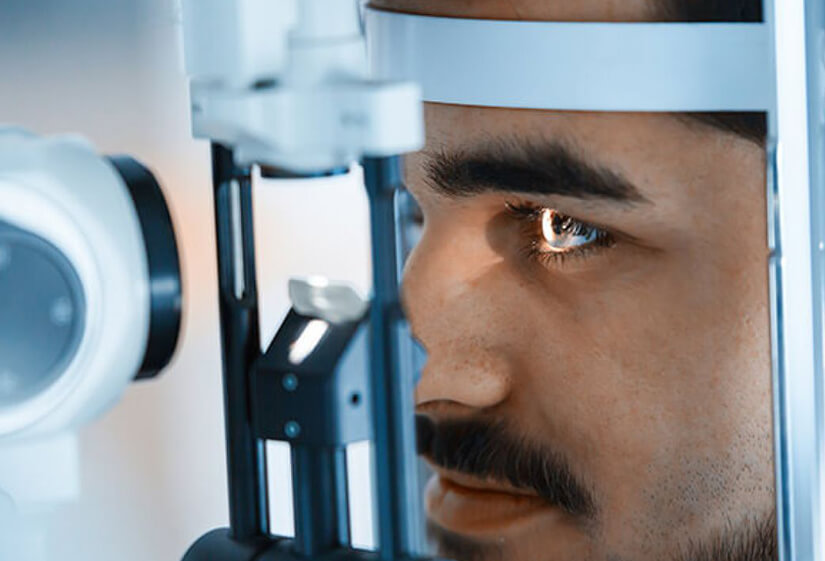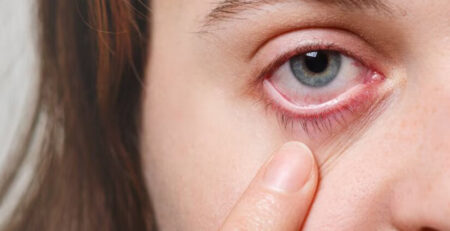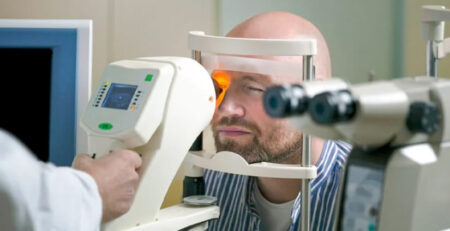Diabetic Retinopathy Laser Treatment – Your Complete Guide
Diabetic retinopathy is considered a severe complication of diabetes, potentially leading to blindness. Elevated blood sugar levels damage the retina’s blood vessels, resulting in vision loss. Diabetic retinopathy treatment via laser therapy provides an effective solution for managing this condition and preventing its progression. Two primary laser treatments for managing diabetic retinopathy are Pan-Retinal Photocoagulation (PRP) and Macular Laser Therapy.
Let us understand both.
1- Pan-Retinal Photocoagulation (PRP)
PRP, or Pan-Retinal Photocoagulation, is an essential treatment for proliferative diabetic retinopathy (PDR), a severe stage of the disease. Your eye specialist can identify PDR by the abnormal growth of blood vessels in the retina. This can cause bleeding into the vitreous humor and further complications.
What you need to know:
Treatment Settings: PRP is administered in 3 to 4 sessions, targeting the periphery of the retina. This treatment is done in stages to allow time for the retina to recover and to ensure complete coverage.
Mechanism: The laser administered in this type of laser eye surgery seals off or destroys the abnormal blood vessels and the avascular retina (area of retina where blood supply has reduced due to diabetic retinopathy). This reduces the amount of VEGF in the eye (a chemical that causes the progression of diabetic retinopathy). This further reduces the risk of bleeding and prevents severe vision loss. This is crucial, as further bleeding and traction can lead to severe complications, including retinal detachment.
Effectiveness: PRP significantly reduces the progression of PDR. By sealing off the abnormal vessels, it minimizes the chance of severe visual impairment and stabilizes the condition, preventing further deterioration. It also helps in improving blood supply to the central retina, that is responsible for most of the vision.
2- Macular Laser Therapy
Macular laser therapy focuses on treating diabetic macular edema (DME), a condition where fluid accumulates in the macula, the central part of the retina responsible for detailed vision. This can result in blurred vision and difficulty with tasks such as reading or recognizing faces.
What you need to know:
Secondary Treatment: Macular laser therapy is also a type of laser eye surgery which is primarily used as a supportive treatment when anti-VEGF (Vascular Endothelial Growth Factor) injections do not adequately manage DME. Injections work to reduce fluid accumulation, but if the swelling persists or recurs, laser therapy can provide additional support.
Procedure: The laser targets specific areas of the macula, reducing leakage from abnormal blood vessels, thus mitigating fluid buildup. This focused approach ensures minimal damage to surrounding tissues while addressing the root cause of the edema.
Usage: Although injections are the primary treatment for DME, macular laser therapy can offer additional support for recurring cases. The combination of injections and laser therapy can provide a comprehensive approach to managing DME effectively.
Choosing the Right Treatment
The choice of treatment between PRP and macular laser or both, depends on the stage of diabetic retinopathy and the specific symptoms present. In advanced stages, PRP may be necessary to prevent further complications from proliferative retinopathy, while macular laser therapy offers a supportive role in treating DME.
Final Thoughts
Diabetic retinopathy laser treatments, including PRP and Macular Laser Therapy, are crucial in managing this condition. PRP targets proliferative retinopathy by sealing or destroying abnormal blood vessels, while Macular Laser Therapy provides secondary support in treating DME, especially when injections are insufficient.
If you or a loved one is experiencing symptoms of diabetic retinopathy, including blurred vision, difficulty seeing at night, or dark spots in your vision, don’t delay. Contact Dr. Anisha Gupta, an eye doctor in Delhi practising at Excel Hospital. Dr. Gupta offers comprehensive diabetic retinopathy treatment services, including diagnosis and laser eye surgery options, to help manage and mitigate this serious condition. Take action now to safeguard your vision.







